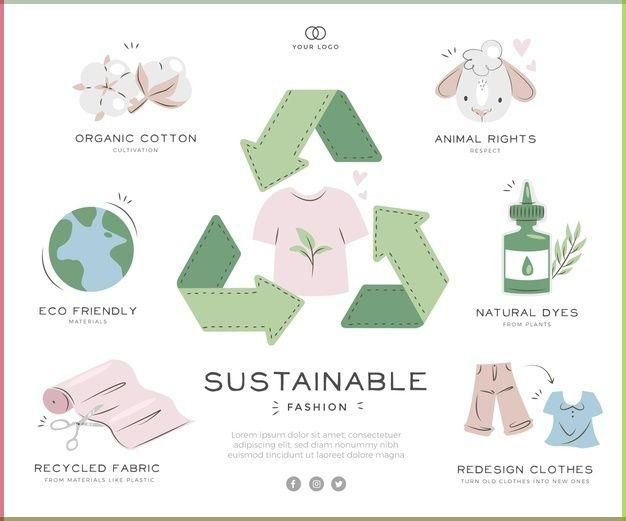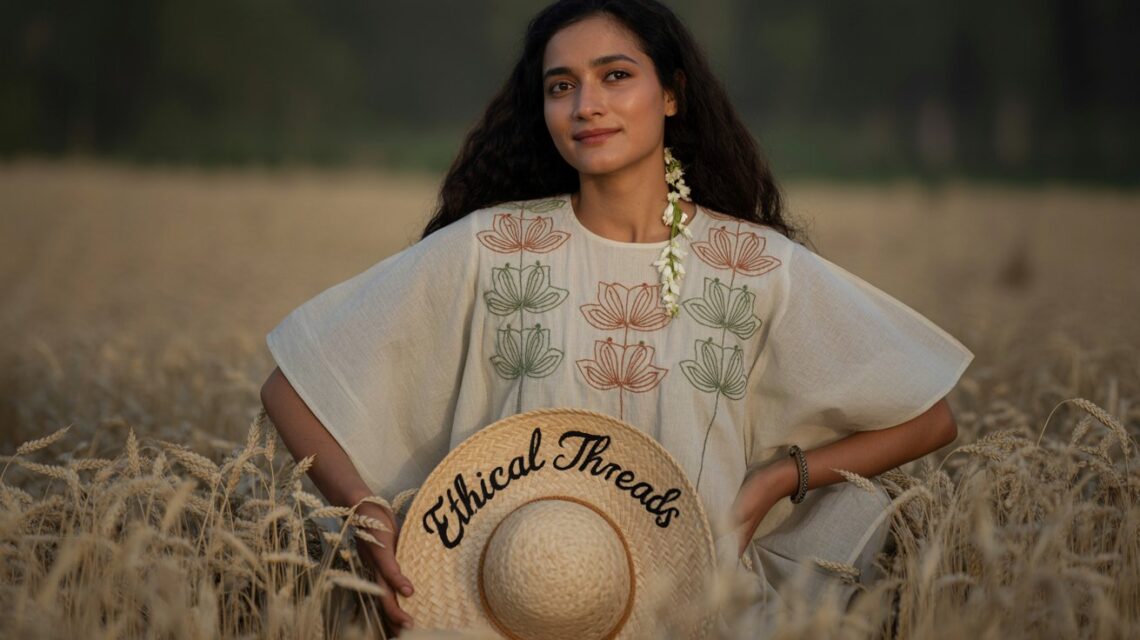Eco-Friendly Fashion Choices: A Step Towards a Sustainable Future
The fashion industry is one of the most polluting industries in the world, with a significant impact on the environment, society, and the economy. The production, distribution, and consumption of clothing have severe consequences, including water pollution, textile waste, and exploitation of workers. However, there is a growing awareness about the importance of Eco Friendly Fashion, and many consumers are looking for ways to make a positive impact.
The Impact of Fast Fashion
Fast fashion has become a dominant force in the fashion industry, with retailers churning out cheap, trendy clothing at an alarming rate. This business model is based on speed and low costs, which results in a significant amount of waste and pollution. The production of synthetic fabrics, such as polyester and nylon, contributes to microplastic pollution in our oceans. Moreover, the dyeing and treatment of fabrics require vast amounts of water and chemicals, which often end up in waterways, harming aquatic life.
The Benefits of Eco-Friendly Fashion

Eco-friendly fashion choices offer a range of benefits, from reducing waste to promoting sustainable production practices. By choosing Eco Friendly Fashion, consumers can reduce their environmental footprint, support fair labor practices, and promote sustainable agriculture. Moreover, Eco Friendly Fashion can also help to reduce the amount of waste sent to landfills and conserve natural resources.
How to Make Eco-Friendly Fashion
1. Choose Sustainable Materials

The first and most important step is to use eco-friendly fabrics. These materials are biodegradable, renewable, and less harmful to the planet.
Best Sustainable Fabrics:
- Organic Cotton: No toxic pesticides, less water usage.
- Hemp: Grows fast, requires little water, naturally pest-resistant.
- Linen (Flax): Durable, biodegradable, low water use.
- Tencel /Lyocell: Made from eucalyptus, closed-loop production.
- Recycled Fabrics: Recycled polyester, nylon, or denim keep materials out of landfills.
2. Use Ethical Production Methods
Creating eco-friendly fashion means treating people as well as the planet with respect.
Tips:
- Source fabrics from ethical suppliers who pay fair wages.
- Choose local manufacturers to reduce carbon footprint.
- Look for certifications like Fair Trade, GOTS, or B Corp.
- If making your own clothes, consider slow production—focus on quality, not quantity.
3. Design for Longevity and Versatility
Fast fashion falls apart quickly. Eco Friendly Fashion lasts for years.
How to do it:
- Use timeless designs rather than chasing trends.
- Stick to neutral, mix-and-match colors.
- Make items multi-functional (e.g., reversible jackets, adjustable waistbands).
- Reinforce seams and use quality hardware (buttons, zippers).
4. Reduce Waste During Production
Waste happens but it can be minimized.
Sustainable practices:
- Use zero-waste pattern making.
- Reuse fabric scraps for small accessories, tags, or packaging.
- Repurpose old garments into new items.
- Donate or recycle leftover fabric.
5. Minimize Water and Chemical Use
Dyeing and finishing processes are often toxic to water supplies.
Eco-friendly dye options:
- Use natural dyes (from plants, flowers, spices).
- Choose low-impact dyes or waterless dyeing technologies.
- Avoid synthetic finishes like wrinkle-resistance or water-repellent chemicals unless plant-based.
6. Use Sustainable Packaging

Fashion doesn’t stop at the garment packaging matters too.
Ideas:
- Use recycled or compostable boxes and bags.
- Avoid plastic whenever possible.
- Include minimal branding and encourage reuse.
- Add tags made from recycled paper or seed paper that can be planted.
Eco-Friendly Fashion Brands
Some fashion brands are leading the way in Eco Friendly Fashion practices. These brands prioritize sustainability, fair labor practices, and transparency in their production processes. Some examples of eco-friendly fashion brands include Patagonia, Reformation, and People Tree. These brands offer a range of eco-friendly clothing options, from outdoor apparel to everyday wear.
The Future of Eco Friendly Fashion
The future of fashion is uncertain, but one thing is clear: the industry needs to change. The growing awareness about the environmental and social impact of fashion has led to a shift towards sustainability. Consumers are demanding more transparency, accountability, and sustainability from fashion brands. As a result, many brands are adoptingEco Friendly Fashion practices, such as using recycled materials, reducing waste, and promoting fair labor practices.
Eco Friendly Fashion choices are no longer a niche trend; they’re a necessity. By making conscious choices about the clothing we buy, wear, and discard, we can significantly reduce our impact on the environment. Whether you’re a seasoned eco-warrior or just starting to explore sustainable fashion practices, every choice counts. Let’s work together to create a more sustainable fashion industry.



